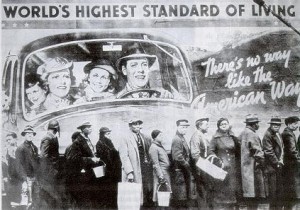Analyzing America’s Most Affluent Towns

According to this map on Slate, originally from Business Insider, of the most affluent town in each state, several of the most affluent towns in America are “hidden” (Hidden Spring, Idaho; Hidden Hills, California) or otherwise make their exclusivity clear in their names (Paradise Valley, Arizona; Bayou Country Club, Louisiana). Yes, that is, apparently, a real place. So is Rafter J Ranch, Wyoming. How many people live there, do you think? Just one dude, some cattle, and his dog? The site says population has to be 1000+ but maybe they’ve fudged the numbers by counting horses.
Many of these esteemed locales are elevated, closer to God and further from the rabble, who can’t afford protection from floods: Hidden Hills, CA; Cherry Hills Village, Colorado; Nichols Hills, Oklahoma; Dakota Dunes, South Dakota; River Hills, Wisconsin; Clyde Hill, Washington; Short Hills, New Jersey; and Mission Hills, Kansas.
Valleys are pleasant, too, (Paradise Valley, AZ; East Valley, Nevada; Clarkson Valley, Missouri) if way outnumbered by summits. There’s even Emigration Canyon, Utah. But for the most part, rich people want to stay high and dry. Though near the water, when possible. Wealthy folks like coast-y parts of coastal states. That makes sense. If I had all the money, I’d want unimpeded expanses to survey from my dominion, too.
Naturally, a map like this also makes clear that the richest town in Arkansas — Maumelle, AR, median income $82,000 — wouldn’t even register in a state like Illinois, where the wealthiest concentration is Kenilworth, IL, median income $229,800. That’s, perhaps, to be expected. But what I find surprising is that among the most modest contenders here, besides Arkansas, are Nebraska (Gretna: $77,800), Vermont (Jericho: $78,000), North Dakota (Horace: $88,700), West Virginia (Shepherdstown: $81,000) and Rhode Island (Ashaway: $84,500).
Do high-income people in those states do a better job of blending in among the general population rather than clustering? Or are there fewer high-income folks there altogether? These kinds of maps raise so many QUESTIONS.
Support The Billfold
The Billfold continues to exist thanks to support from our readers. Help us continue to do our work by making a monthly pledge on Patreon or a one-time-only contribution through PayPal.
Comments